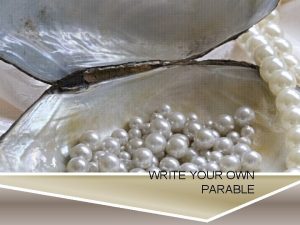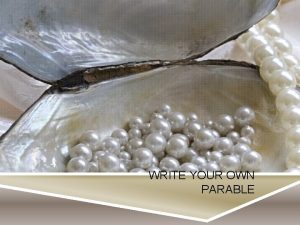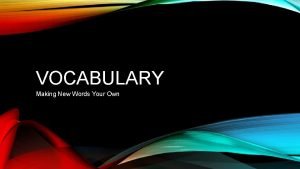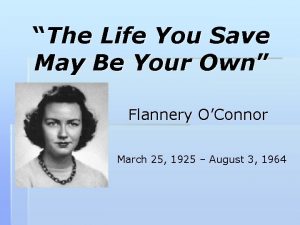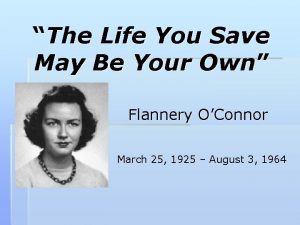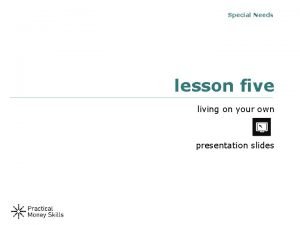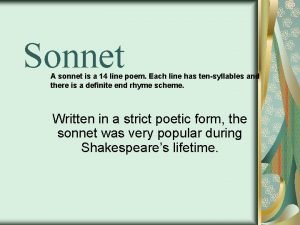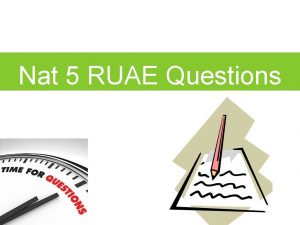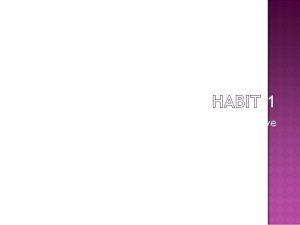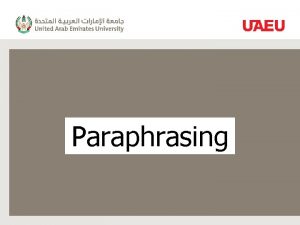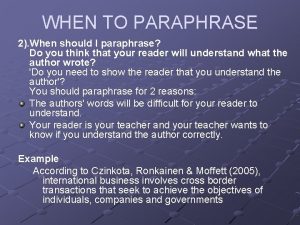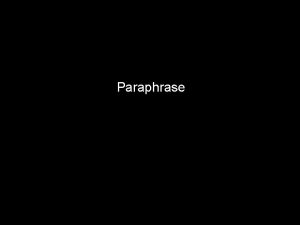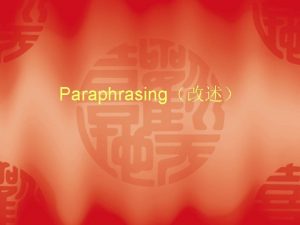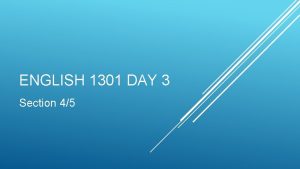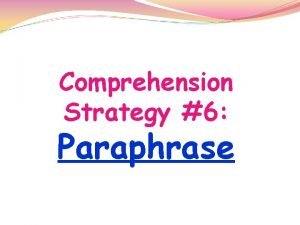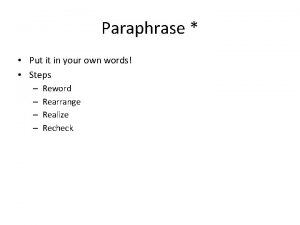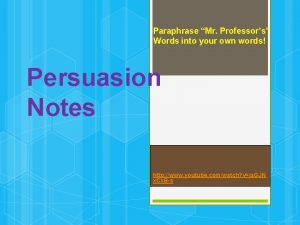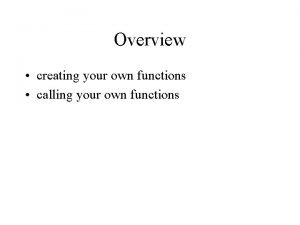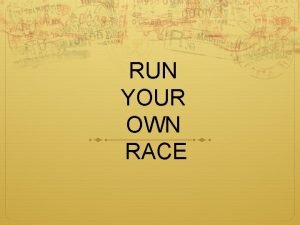ParaphrasingWhat is it A paraphrase is your own















- Slides: 15

Paraphrasing…What is it?

A paraphrase is. . . your own rendition of essential information and ideas expressed by someone else, presented in a new form. One legitimate way (when accompanied by accurate documentation) to borrow from a source. A more detailed restatement than a summary, which focuses concisely on a single main idea.

Paraphrasing is a valuable skill because. . . It is better than quoting information from an undistinguished passage. It helps you control the temptation to quote too much. The mental process required for successful paraphrasing helps you to grasp the full meaning of the original.

How to Recognize Plagiarism

6 Steps to Effective Paraphrasing 1 Reread the original passage until you understand its full meaning. 2 Set the original aside, and write your paraphrase on a note card. 3 Jot down a few words below your paraphrase to remind you later how you envision using this material. At the top of the note card, write a key word or phrase to indicate the subject of your paraphrase. 4 Check your rendition with the original to make sure that your version accurately expresses all the essential information in a new form. 5 Use quotation marks to identify any unique term or phraseology you have borrowed exactly from the source. 6 Record the source (including the page) on your note card so that you can credit it easily if you decide to incorporate the material into your paper.

The original passage: Students frequently overuse direct quotation in taking notes, and as a result they overuse quotations in the final [research] paper. Probably only about 10% of your final manuscript should appear as directly quoted matter. Therefore, you should strive to limit the amount of exact transcribing of source materials while taking notes. Lester, James D. Writing Research Papers. 2 nd ed. (1976): 4647.

A plagiarized version: Students often use too many direct quotations when they take notes, resulting in too many of them in the final research paper. In fact, probably only about 10% of the final copy should consist of directly quoted material. So it is important to limit the amount of source material copied while taking notes.

A legitimate paraphrase: In research papers students often quote excessively, failing to keep quoted material down to a desirable level. Since the problem usually originates during note taking, it is essential to minimize the material recorded verbatim (Lester 46 -47).

An acceptable summary: Students should take just a few notes in direct quotation from sources to help minimize the amount of quoted material in a research paper (Lester 46 -47).

Directions: On a separate piece of paper, write a paraphrase for each of the following passages. Make sure you complete this paraphrasing activity for all 5 readings. Try not to look back at the original passage. You will turn in your paper today!!!

1. "The Antarctic is the vast source of cold on our planet, just as the sun is the source of our heat, and it exerts tremendous control on our climate, " [Jacques] Cousteau told the camera. "The cold ocean water around Antarctica flows north to mix with warmer water from the tropics, and its upwellings help to cool both the surface water and our atmosphere. Yet the fragility of this regulating system is now threatened by human activity. " From "Captain Cousteau, " Audubon (May 1990): 17.

2. The twenties were the years when drinking was against the law, and the law was a bad joke because everyone knew of a local bar where liquor could be had. They were the years when organized crime ruled the cities, and the police seemed powerless to do anything against it. Classical music was forgotten while jazz spread throughout the land, and men like Bix Beiderbecke, Louis Armstrong, and Count Basie became the heroes of the young. The flapper was born in the twenties, and with her bobbed hair and short skirts, she symbolized, perhaps more than anyone or anything else, America's break with the past. From Kathleen Yancey, English 102 Supplemental Guide (1989): 25.

3. Of the more than 1000 bicycling deaths each year, three-fourths are caused by head injuries. Half of those killed are school -age children. One study concluded that wearing a bike helmet can reduce the risk of head injury by 85 percent. In an accident, a bike helmet absorbs the shock and cushions the head. From "Bike Helmets: Unused Lifesavers, " Consumer Reports (May 1990): 348.

4. Matisse is the best painter ever at putting the viewer at the scene. He's the most realistic of all modern artists, if you admit the feel of the breeze as necessary to a landscape and the smell of oranges as essential to a still life. "The Casbah Gate" depicts the well-known gateway Bab el Aassa, which pierces the southern wall of the city near the sultan's palace. With scrubby coats of ivory, aqua, blue, and rose delicately fenced by the liveliest gray outline in art history, Matisse gets the essence of a Tangier afternoon, including the subtle presence of the bowaab, the sentry who sits and surveys those who pass through the gate. From Peter Plagens, "Bright Lights. " Newsweek (26 March 1990): 50.

5. While the Sears Tower is arguably the greatest achievement in skyscraper engineering so far, it's unlikely that architects and engineers have abandoned the quest for the world's tallest building. The question is: Just how high can a building go? Structural engineer William Le. Messurier has designed a skyscraper nearly onehalf mile high, twice as tall as the Sears Tower. And architect Robert Sobel claims that existing technology could produce a 500 -story building. From Ron Bachman, "Reaching for the Sky. " Dial (May 1990): 15.
 What type of sae is when you own your own business
What type of sae is when you own your own business In your notebook, define the following
In your notebook, define the following Your conscious awareness of your own name
Your conscious awareness of your own name Give us your hungry your tired your poor
Give us your hungry your tired your poor Got my own
Got my own Parable writing
Parable writing Write your own parable
Write your own parable Making new words your own
Making new words your own Dramatic irony in the life you save may be your own
Dramatic irony in the life you save may be your own The life you save may be your own meaning
The life you save may be your own meaning Lesson four living on your own
Lesson four living on your own 14 line poem
14 line poem Mind your own business atau myob adalah
Mind your own business atau myob adalah Ruffles slogan
Ruffles slogan How to do ruae questions
How to do ruae questions Proactive vs reactive 7 habits
Proactive vs reactive 7 habits





